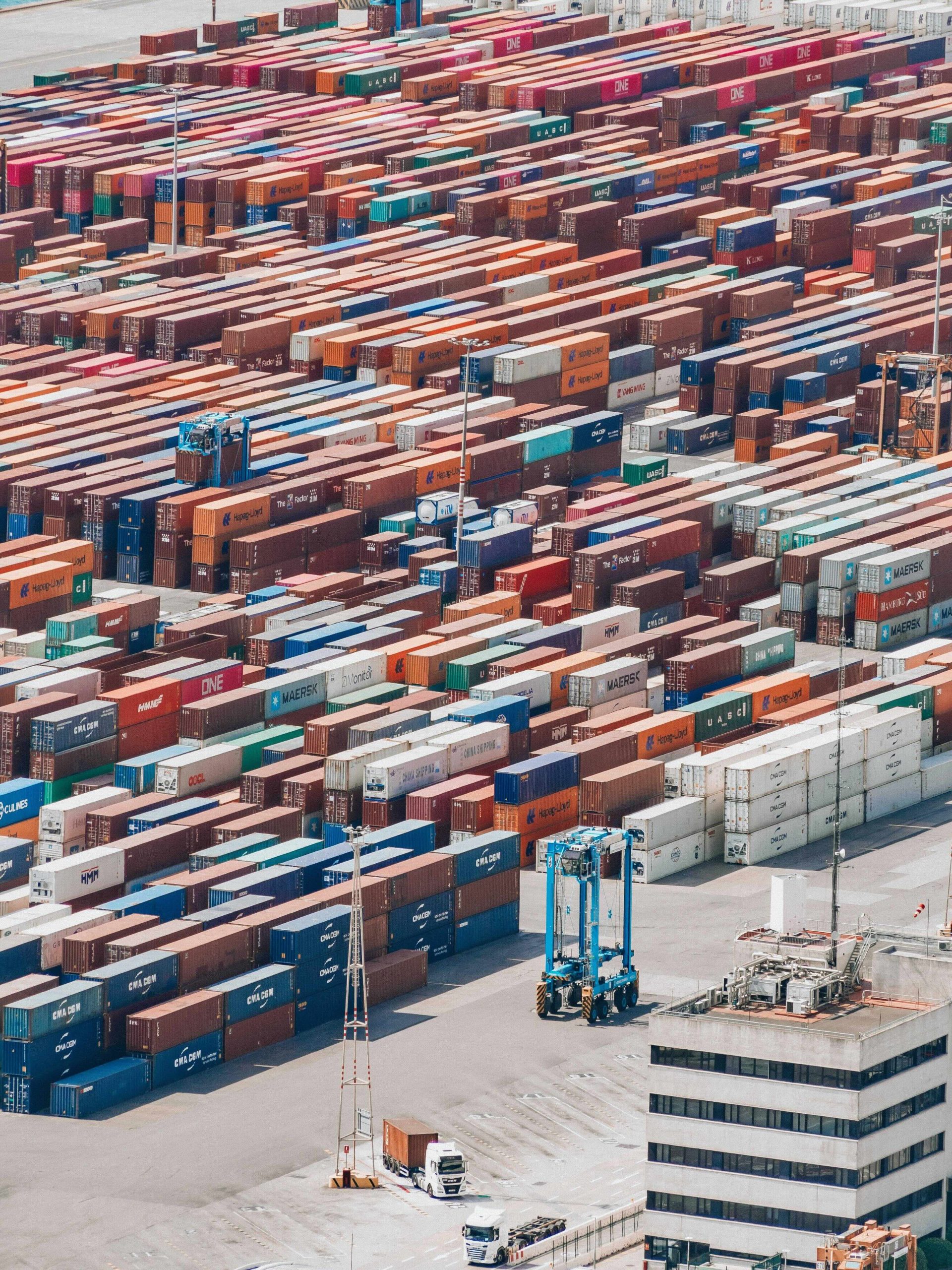Rising Tensions and Tariffs: Elevated Duties on Mexico, Canada and the Future of the USMCA

By Della Helwig*
While the Trump Administration has repeatedly made headlines for bold policy changes and executive orders since the beginning of President Trump’s second term, one of the most controversial developments currently underway is the imposition of “reciprocal tariffs” on nearly every country in the world. Among the most impacted are Mexico and Canada—our closest trading partners—raising serious concerns about the balance between national security and economic diplomacy.
Regarding Mexico and Canada, a specific tariff for these two countries and China was announced as a sweeping 25% tariff on all imports.[1] The Administration tied the move to issues like illegal immigration and drug trafficking.[2] After a period of speculation, an amended executive order clarified that these tariffs would apply only to products not protected under the United States-Mexico-Canada Agreement (USMCA), allowing compliant goods to maintain a 0% rate.[3] However, non-USMCA compliant goods from Mexico and Canada will still face a 25% tariff, and non-compliant energy and potash will see a 10% tariff.[4] President Trump has caused further strain to “the USMCA, stating in a recent statement that the USMCA is much better than NAFTA, but the problem is” Mexico and Canada “cheat like crazy.”[5] Along with this, there has been further strain on the relationships with both Mexico and Canada due to other statements the President has made in office, including his idea of making Canada the 51st state.[6]
These and the worldwide tariffs are being implemented under the President’s authority through the International Emergency Economic Powers Act (IEEPA), and their application is highly discretionary. As for the rest of the world, a 10% flat tariff on all countries took effect April 5, 2025, followed by a scheduled higher, individualized reciprocal tariff on countries with the largest trade deficits beginning April 9.[7] However, mere hours after the higher individualized tariffs were supposed to take effect, the Trump Administration announced a 90-day delay on these tariffs, excluding China.[8] At this time and during the delay, other countries will remain at the 10% rate.[9] The President also retains the authority to increase tariffs if there is retaliation or to reduce them if a country takes significant steps to address the trade imbalance.
Several items are categorically excluded from these tariffs, including:
- Articles subject to 50 U.S.C. § 1702(b),
- Steel, aluminum, autos, and auto parts already subject to Section 232 tariffs,
- Copper, pharmaceuticals, semiconductors, and lumber,
- Any articles that may become subject to future Section 232 tariffs,
- Bullion, and
- Energy and certain minerals not available in the United States.[10]
In the case of Mexico and Canada, previously issued IEEPA orders relating to fentanyl and migration remain in effect.[11] If the USMCA were not in place, these countries would face additional tariffs on all products due to the increased tariffs to combat migration and drugs. Along with this, if the 25% tariffs are terminated against Canada and Mexico, they will still be subject to 12% tariffs.[12] As it stands, during the temporary 90-day pause on the full reciprocal tariff implementation, officials have stated that the 10% global flat rate will not apply to Mexico and Canada but that they are subject to the 25% individual tariffs.[13]
The initial announcement and proposed implementation caused a significant drop in U.S. stock markets, sending United States citizens into distress and causing noticeable impacts on domestic and global markets.[14] Following President Trump’s decision to remove some of the tariffs, markets responded positively, reflecting deep concern over the economic impact of such aggressive trade actions should President Trump continue with this implementation after the 90 days expires.[15]
The imposition of further tariffs—especially those not originally contemplated under the USMCA—can potentially undermine the agreement itself. While safeguarding national security and economic interests is important, leveraging tariffs against our closest allies may result in more harm than good. Rather than using punitive tactics, the United States could build collaborative frameworks with allies to reinforce mutual economic goals and security concerns.
As of when this article was written, Mexico, Canada, and China remain subject to elevated tariffs, and President Trump has not signaled any intention to remove them. Whether this policy remains firm or continues to evolve will determine the long-term impact on trade, economic diplomacy, and the strength of the USMCA.
* J.D. Candidate, Class of 2026, Sandra Day O’Connor College of Law at Arizona State University
[1] Exec. Order No. 14193, 90 Fed. Reg. 9113 (Feb. 1, 2025).
[2] Id.
[3] Exec. Order No. 14231, 90 Fed. Reg. 11785 (Mar. 6, 2025).
[4] Id.
[5] Global News, Trump Won’t Pause Tariffs, Says Canada and Mexico “Cheat Like Crazy”, YouTube (Apr. 7, 2025), https://www.youtube.com/watch?v=jjI1SRR3AWc.
[6] Matina Stevis-Gridneff, How Trump’s ‘51st State’ Canada Talk Came to Be Seen as Deadly Serious, N.Y. Times (Mar. 7, 2025), https://www.nytimes.com/2025/03/07/world/canada/trump-trudeau-canada-51st-state.html.
[7] Exec. Order No. 14257, 90 Fed. Reg. 15041 (Apr. 2, 2025).
[8] Elizabeth Buchwald and Kevin Liptak, Trump announces 90-day pause on ‘reciprocal’ tariffs with exception of China, CNN (Apr. 9, 2025, 5:14 PM), https://www.cnn.com/2025/04/09/business/reciprocal-tariff-pause-trump/index.html.
[9] Id.
[10] Fact Sheet: President Donald J. Trump Declares National Emergency to Increase Our Competitve Edge, Protect Our Soverignty, and Strengthen Our National and Economic Security, White House (Apr. 2, 2025) https://www.whitehouse.gov/fact-sheets/2025/04/fact-sheet-president-donald-j-trump-declares-national-emergency-to-increase-our-competitive-edge-protect-our-sovereignty-and-strengthen-our-national-and-economic-security/.
[11] Id.
[12] Id.
[13] Anndrea Shalal, US Tariffs on Mexico and Canada Unaffected by 90-day Pause, White House Official Says, Reuters (Apr. 9, 2025, 1:37 PM) https://www.reuters.com/world/americas/us-tariffs-mexico-canada-unaffected-by-90-day-pause-white-house-official-says-2025-04-09/.
[14] S&P 500 Down Over 10% in 2 Days as Trump Upends the Global Order, N.Y. Times (Apr. 4, 2025) https://www.nytimes.com/live/2025/04/04/business/trump-tariffs-stocks-economy?campaign_id=60&emc=edit_na_20250404&instance_id=151887&nl=breaking-news®i_id=257702891&segment_id=195308&user_id=f4e81466378d36f3c4c719f3287c605b.
[15] Stan Choe, U.S. Stocks Shoot to Historic Gains After Trump Pauses Most of His Tariffs, PBS News (Apr. 9, 2025, 5:01 PM) https://www.pbs.org/newshour/economy/u-s-stocks-shoot-to-historic-gains-after-trump-pauses-most-of-his-tariffs.


